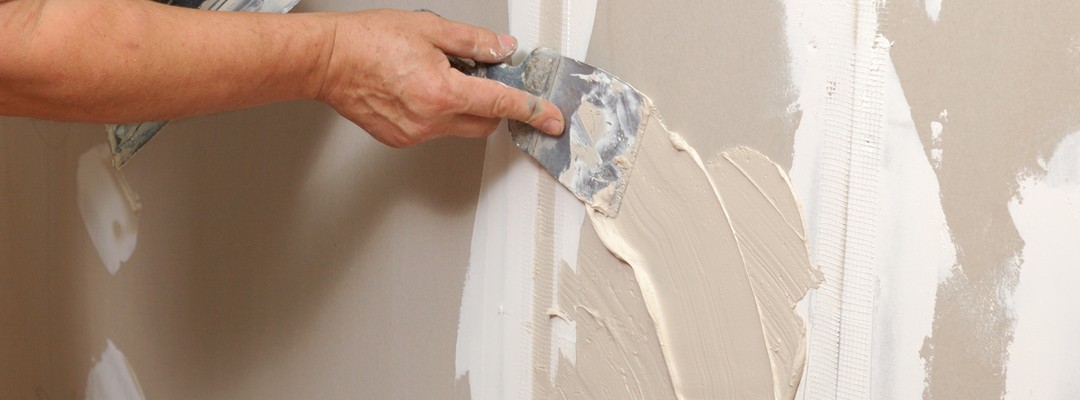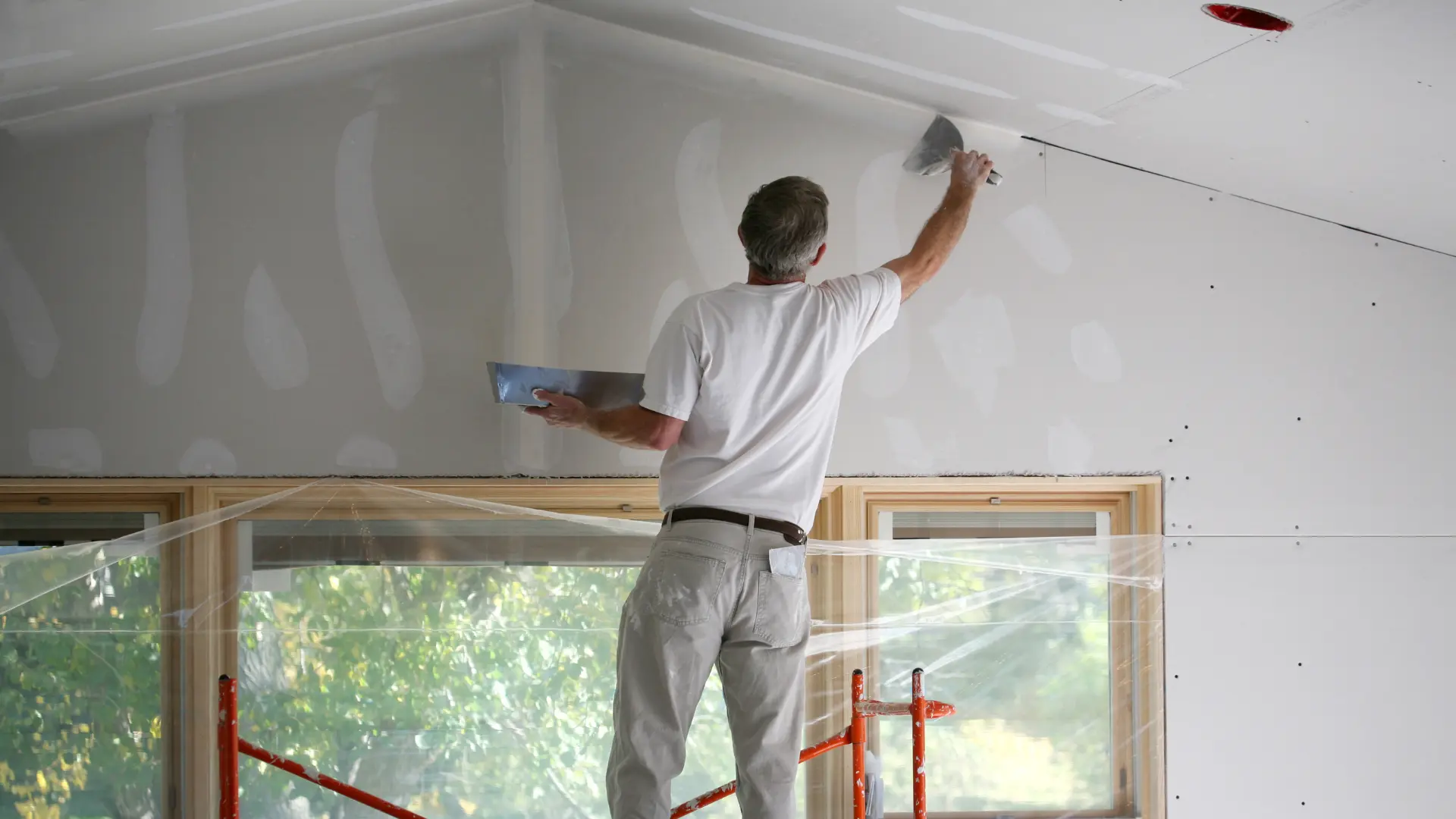Drywall contractors provide craftsmanship that enhances every Interior Painting project.
A Comprehensive Overview to Mastering Drywall Repair Service and Installation
This guide offers a detailed expedition of drywall repair work and setup, satisfying both novices and seasoned experts. It outlines vital devices, methods for patching and hanging sheets, and the vital finishing procedures. drywall contractor. By understanding usual pitfalls, people can achieve sleek results. Grasping these abilities not only improves one's home but additionally develops confidence in DIY ventures. What fundamental suggestions will guarantee an effective task throughout?
Important Devices for Drywall Fixing and Installment
When starting on drywall fixing and installment, a few essential devices can considerably enhance the efficiency and high quality of the job. A drywall knife, normally available in different sizes, is vital for applying joint compound and smoothing seams. A taping knife is also needed for feathering edges and guaranteeing a smooth coating. Additionally, a drywall saw or utility blade enables accurate cutting of drywall sheets to fit any room.

Step-by-Step Guide to Patching Holes
Patching openings in drywall is a simple procedure that can bring back the wall's look and integrity. To start, the location around the opening must be cleansed and any loosened debris removed. For small holes, a simple spackle or joint compound can be used with a putty blade. Bigger openings might require a patch; a piece of drywall can be reduced to fit the hole, protected with sticky or screws, and after that taped around the sides. Once the spot is in place, joint substance is used over the patch and feathered out to blend with the bordering wall. After the compound dries out, sanding is required to attain a smooth finish. The repaired location can be primed and painted to match the rest of the wall. This method ensures a smooth repair, improving the overall appearance of the drywall and keeping its architectural integrity.
Strategies for Hanging Drywall Sheets
After effectively fixing holes in drywall, the following action involves hanging new drywall sheets to produce a seamless surface. To achieve this, one must start by determining the wall space accurately and reducing the drywall sheets to fit. It is crucial to hang the sheets horizontally for better architectural honesty, beginning from the top and functioning downwards.
Utilizing a drywall lift can simplify the procedure, especially for ceiling installations. When positioned, securing the sheets with drywall screws at periods of regarding 12 inches along the sides and 16 inches in the area is essential. Visit Your URL This guarantees a strong hold and lowers the threat of sagging. For edges, the sheets need to be reduced to fit well, permitting cleaner joints. Lastly, it is a good idea to stagger the joints between sheets to reinforce the total framework, creating an extra durable coating ready for the next phase in the drywall installation procedure.
Ending Up Touches: Taping and Mudding
Finishing the drywall installment involves the vital actions of taping and mudding, which ensure a polished and smooth coating. Taping requires the application of joint tape over the joints in between drywall sheets. Interior Painting. This tape can be either paper or fiberglass fit together, with each type offering unique benefits. After taping, the following action is mudding, where joint compound, or "mud," is used to cover the tape and fill up any kind of imperfections
Utilizing a drywall knife, the compound should be spread out uniformly, making sure a feathered edge to lessen noticeable changes. Several coats are usually needed, with sanding in between each layer to attain a smooth surface. Cautious attention during this process is crucial, as it greatly impacts the final appearance of the wall surface. With the best strategy and perseverance, the end outcome will certainly be a remarkable foundation all set for paint or ending up touches.
Usual Errors to Avoid in Drywall Projects

An additional typical mistake is not allowing sufficient drying time in between layers, which can catch dampness and compromise the coating. Neglecting to feather the sides appropriately can create visible lines and imperfections. Finally, skipping sanding or utilizing incorrect strategies may leave rough places. By understanding these pitfalls, individuals can considerably boost the high quality of their drywall jobs and achieve a professional-looking finish.
Often Asked Inquiries
Can I Repair Drywall Without Specialist Aid?
Yes, one can fix drywall without professional help. With the right devices, materials, and guidance, individuals can efficiently take care of minor repairs. Nonetheless, substantial damages may need specialist know-how for click for more excellent results and toughness.
The Length Of Time Does Drywall Compound Require To Dry?
Drywall compound normally takes between 24 to 48 hours to dry entirely, depending upon factors such as moisture and temperature level. Thinner layers might dry out faster, while thicker applications need more time for ideal outcomes.
What's the most effective Kind of Paint for Drywall?
The very best kind of paint for drywall is generally a water-based latex paint. It gives superb protection, longevity, and simplicity of application, making it suitable for indoor wall surfaces while enabling very easy clean-up with soap and water.

How Do I Prevent Mold And Mildew on Drywall?
To stop mold on drywall, guarantee proper ventilation, control humidity levels, use mold-resistant products, and promptly deal with any kind of leakages. Regular assessments and immediate removal of water damages are additionally vital for long-lasting avoidance.
Is Drywall Recyclable After Removal?
Drywall is recyclable after removal, provided it is without pollutants like mold, paint, or various other harmful products. Recycling facilities can process it into new items, promoting sustainability and decreasing land fill waste in building and construction.
When starting on drywall repair work and setup, a few crucial tools can greatly enhance the effectiveness and high quality of the job. After efficiently fixing openings in drywall, the next action entails hanging brand-new drywall sheets to create a smooth surface area. Finishing the drywall installment involves the vital steps of mudding and taping, which guarantee a polished and smooth surface. Attaining a refined finish in drywall jobs can be tough, and a number of typical mistakes can undermine the high quality of the job. Yes, one can fix drywall without expert assistance.